Who is Yayoi Kusama?
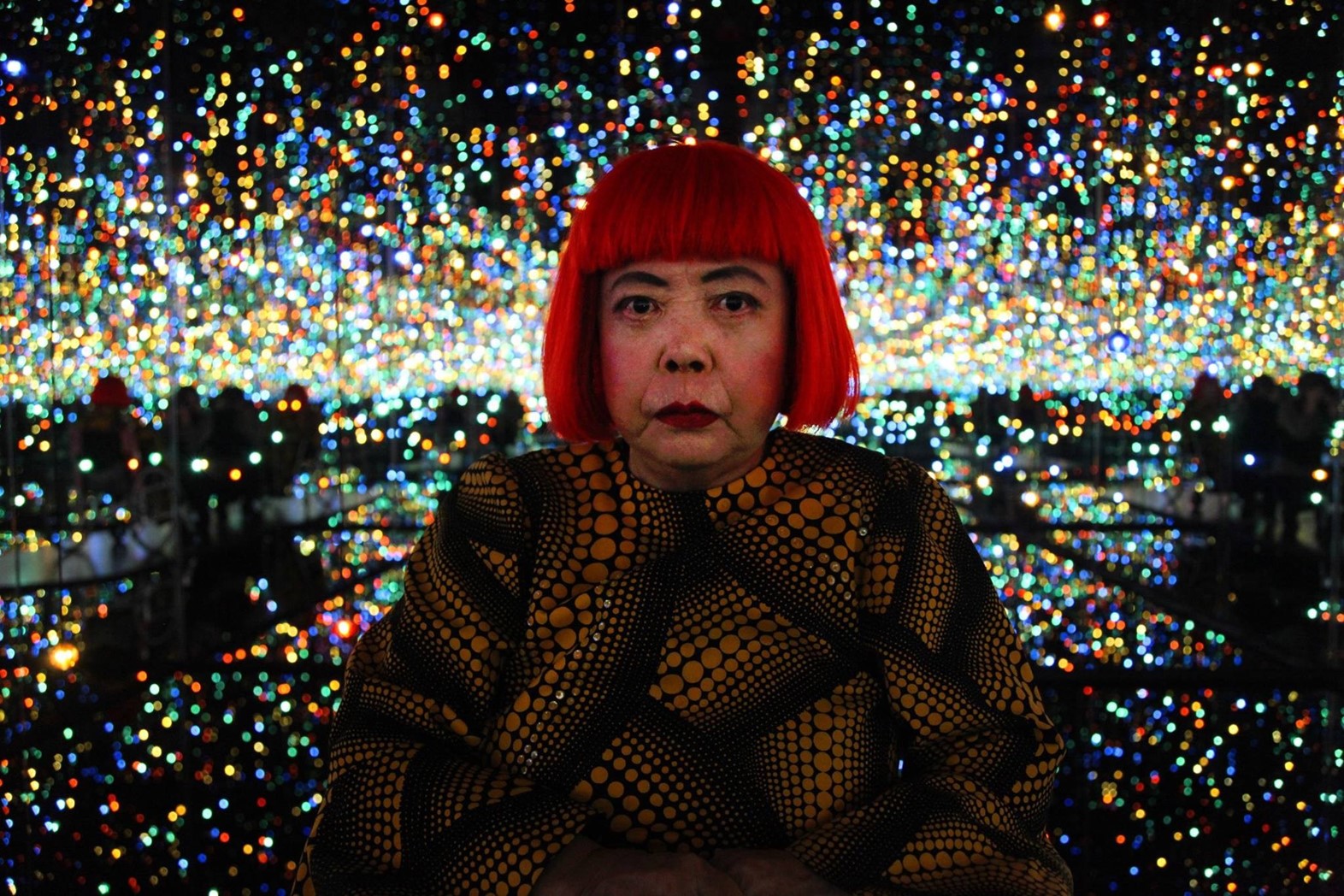
In recent years, Yayoi Kusama has become the best-selling female artist in the world.
In 2019, her work reportedly accounted for 25% of the market in all auction sales of art created by women.
Her vitality is remarkable, as she works in a variety of mediums, from pumpkins to polka dots, but her signature form is undoubtedly a series of installations called Infinity Mirror Rooms.
These immersive works, in which interiors are lined with mirrors to create the illusion of an endlessly repeating space, are increasingly in demand.
The Broad Museum of Art, Los Angeles, put one of its mirror rooms, The Souls of Millions of Light Years Away (2013), online during the pandemic, allowing visitors from around the world to experience the artist's exploration of eternity.
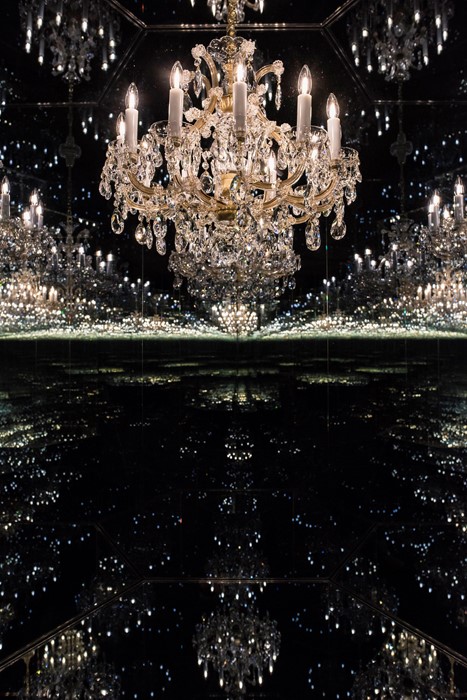
Chandelier of Grief, 2016 - 2018
A passion since childhood, a solo exhibition in Manhattan
Yayoi Kusama's interest in the mirror room began with her childhood artwork.
Born in Matsumoto in 1929, she created thousands of small drawings as a child, which she later developed into sculptures.
This was the beginning of her desire to create endless images, a concept that would eventually come to fruition in the form of creating mirror room environments.
She came to the United States in 1957, arrived in New York City in 1958, and had her first solo exhibition at the Brata Gallery on East 10th Street in Manhattan in 1959. Over the next several years, she participated in numerous exhibitions in and around New York City, developing her work.
The Castellane Gallery at 1078 81st Street at Madison Avenue was the site of what would later become her first Mirror Room.
Her solo exhibition, "Infinity Mirror Room - Phalli's Field (Floor Show)," held in November 1965, consisted of a space lined with mirrors covering the entire floor, in which she displayed a number of polka-dot, phallic-image stuffed animals that, when reflected in the mirrors, seemed to infinitely regress into the surrounding space. When reflected in the mirror, the objects appeared to regress endlessly into the surrounding space.
In addition, a photograph of Yayoi Kusama in a red jumpsuit, taken during the installation, reflected the same infinitely expanding image of Yayoi Kusama as the objects on the floor.
This "Phalli's Field (Floor Show)" was followed by the mirror room "Peep Show (Endless Love Show)" held at the same gallery in March 1966.
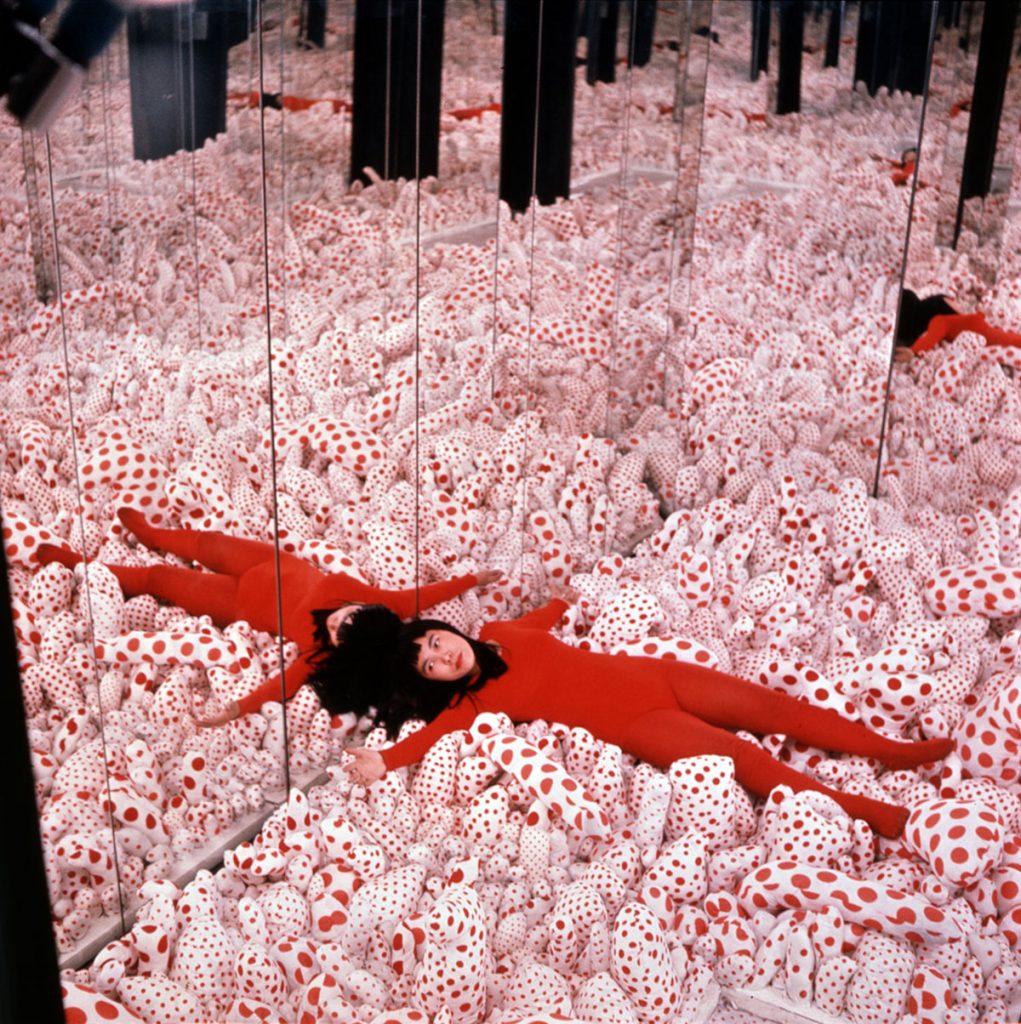
Room Installation
However, in that same year (1996), another New York-based artist presented a mirror installation work, which attracted a great deal of attention in the shadow of Kusama's own breakthrough.
This was Lucas Samaras's "Room No. 2" (otherwise known as the "Mirrored Room"), which was unveiled at New York's Pace Gallery in 1966.
Like Kusama's work, Samaras' Room No. 2 was an installation in which the viewer entered a mirrored room, creating a sense of infinite space.
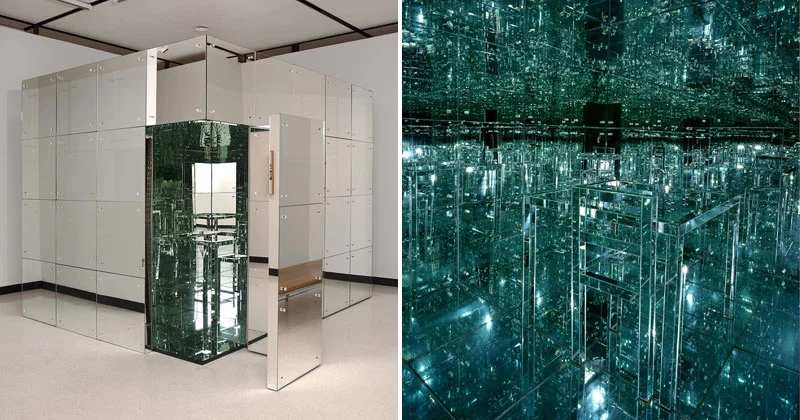
Mirrored Room by Lucas Samaras
Due in part to the gallery's high profile, the exhibition attracted more attention than Kusama's, and many mistakenly believed that it was Samaras who created this new form.
This incident caused Kusama to become deeply depressed, and it was around this time that she attempted suicide. It is said that he attempted to commit suicide by jumping from the window of his apartment, but his bicycle fell on him and saved his life.
Throughout her life, Kusama has relied on art when she has fallen into difficult situations, and her recovery after this dramatic fall was also due to art.
When she participated in the 1966 Venice Biennale, she decided to launch her own exhibition outside of the official framework of the main exhibition.
Like the rooms she had previously presented, she created works with a mirrored finish.
That work, Narcissus Garden, was composed of 1,500 mirror balls, some of which were sold to Biennale visitors for $2 each, but the sale was discontinued after the authorities intervened.
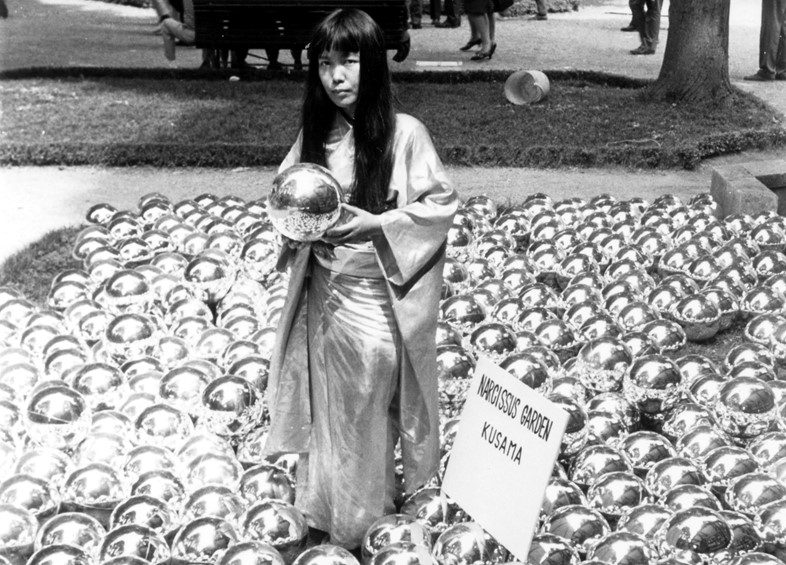
Narcissus Garden.
Presented at the Biennale, the original "Mirror Room"
This use of mirror images in Venice restored Kusama's degree of recognition.
Twenty-seven years later, Kusama represented Japan at the 1993 Biennale, again creating Mirror Room.
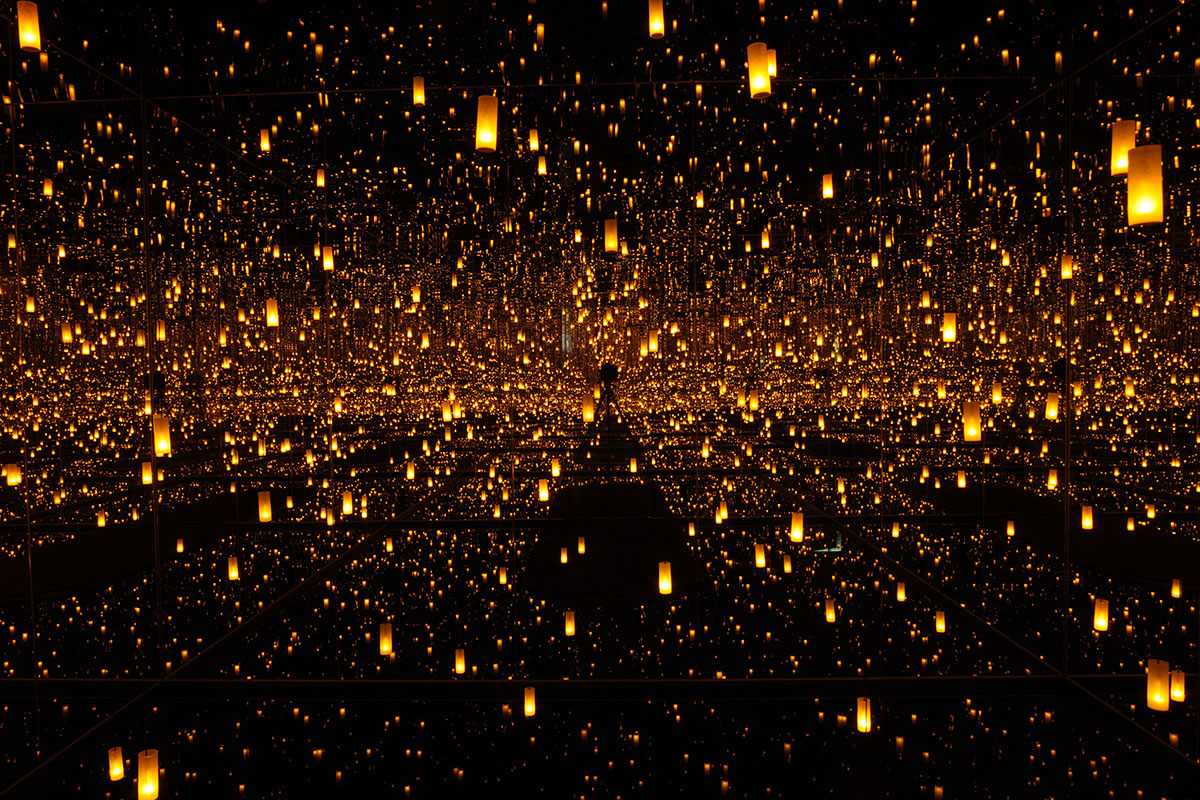
Since then, Kusama has created more than 20 mirror rooms, and mirror rooms have become an increasingly important part of her practice as an artist.
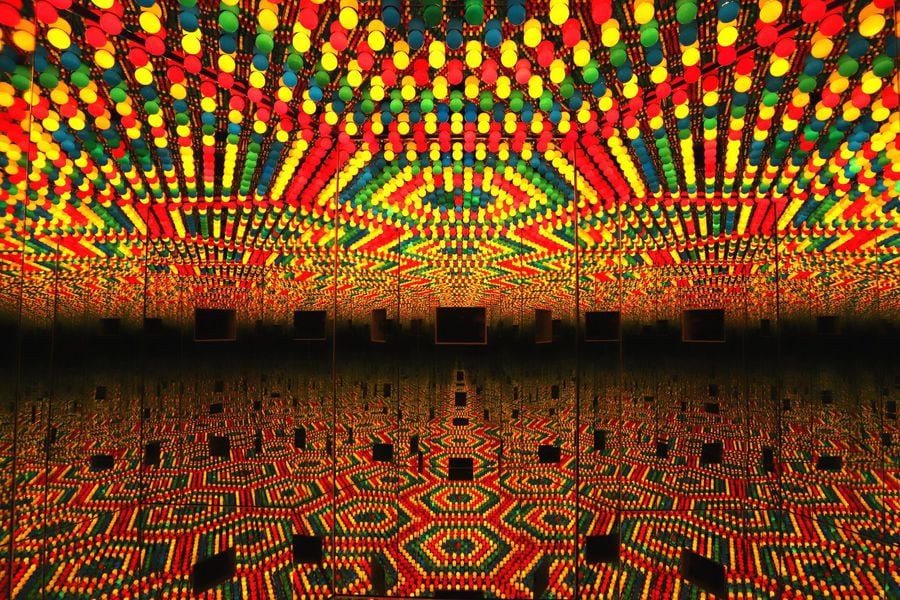
In recent years, she has also publicly commented on some critics who see Samaras as appropriating her work.
In a famous interview conducted by Damien Hirst as an interviewer, when asked what she thought was the difference between Samaras' mirrored room and her own work, she replied.
Lucas Samaras always imitates the work of other artists. I don't think his work has any originality. He was inspired by my work to create the Mirror Room series. Therefore, my Infinity Rooms have nothing to do with his vision."
Misunderstandings about the origins of the Mirror Room concept still occur from time to time.
When curator Mika Yoshitake organized an exhibition of Yayoi Kusama's work in Washington several years ago, he was contacted in advance by an unidentified artist who stated that Samaras had created the first Mirror Room.
At that time, Yoshitake corrected her, saying that Kusama was the pioneer of the mirror room.
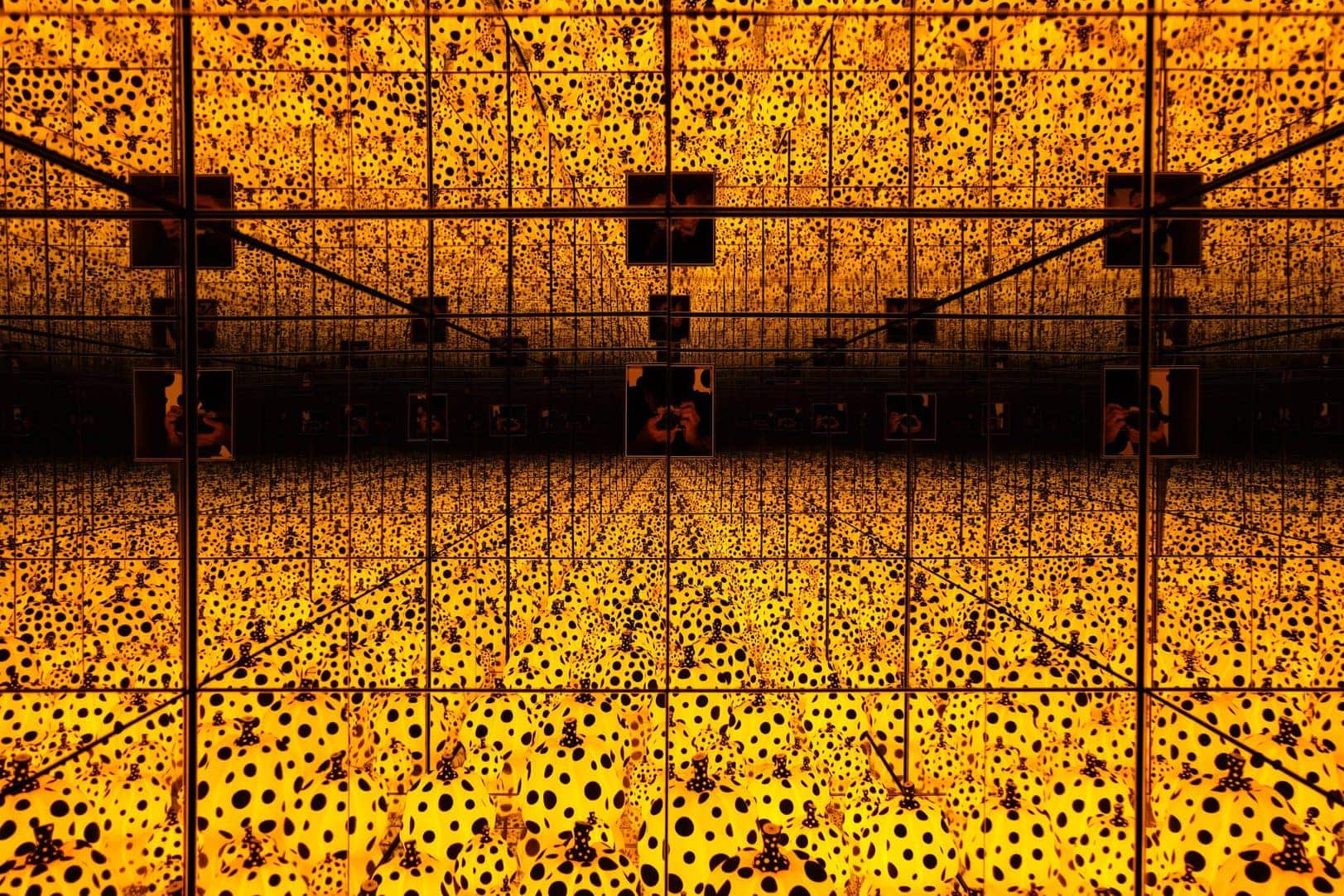
However, most people now recognize that the creation of the Mirror Room environment was by Kusama herself and is her masterpiece.
It may have taken a few decades, but her masterpiece is now receiving its rightful recognition.